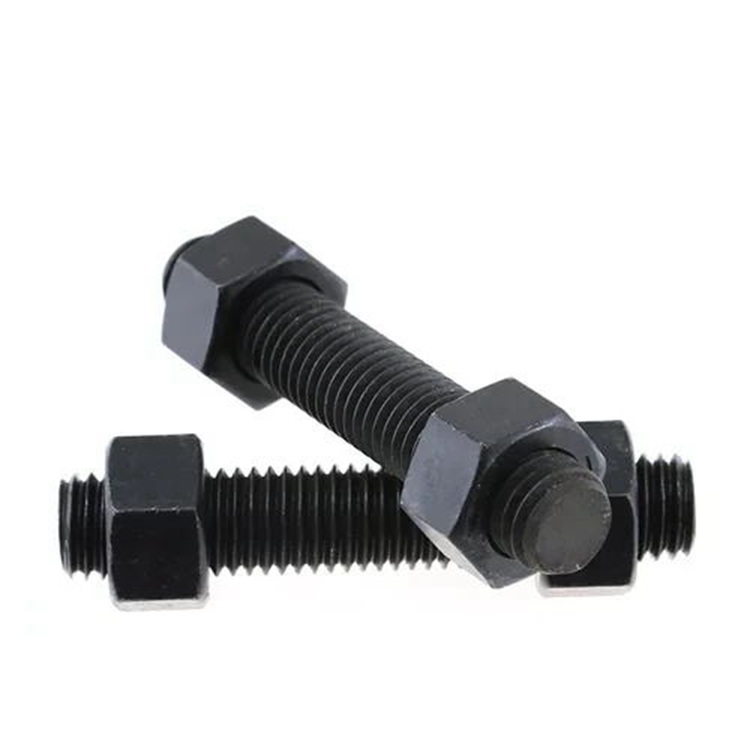OEM Rod End Bolts for Enhanced Performance and Reliability in Mechanical Applications
Oct . 02, 2024 11:02 Back to list
OEM Rod End Bolts for Enhanced Performance and Reliability in Mechanical Applications
Understanding OEM Rod End Bolts A Comprehensive Guide
In the world of machinery and automotive engineering, every component plays a pivotal role in the overall function and performance of a system. One such integral component, often overlooked yet tremendously important, is the OEM (Original Equipment Manufacturer) rod end bolt. This article delves into detail about OEM rod end bolts, their significance, types, applications, and maintenance considerations.
What are OEM Rod End Bolts?
OEM rod end bolts are specialized fasteners designed to connect various components within automotive and industrial machinery systems. Unlike generic bolts, OEM rod end bolts are manufactured to match the exact specifications and quality standards set by the original equipment manufacturers. This precision in design ensures that they perform optimally, are durable, and can withstand the conditions they are subjected to in their specific applications.
Importance of Using OEM Components
Using OEM components, including rod end bolts, is crucial for several reasons
1. Quality Assurance OEM parts are made with high-quality materials and are rigorously tested, leading to better reliability and longevity compared to aftermarket alternatives. 2. Performance These bolts are designed specifically to fit the machinery they are meant for, ensuring that the system operates smoothly without unexpected failures or malfunctions.
3. Warranty Protection Using OEM parts often helps maintain the warranty on vehicles or machinery, as manufacturers typically require that only original parts be used in servicing.
Types of OEM Rod End Bolts
OEM rod end bolts come in various designs and specifications, tailored to different applications. Here are some common types
1. Male and Female Rod Ends These fasteners feature different connection types, often with threads designed to screw into corresponding components, allowing for greater flexibility in design.
2. Sealed vs. Unsealed Sealed rod end bolts are designed to prevent contamination from dirt and debris, crucial for components exposed to harsh environments.
3. Material Variations Depending on the application, OEM rod end bolts can be made from different materials such as stainless steel for corrosion resistance or high-strength alloys for enhanced durability.
oem rod end bolts

Applications of OEM Rod End Bolts
These fasteners are widely used in various sectors, reflecting their versatility
- Automotive Industry In vehicles, OEM rod end bolts are crucial in the suspension system, connecting the control arms and other components. Ensuring these bolts are OEM quality can significantly affect vehicle safety and handling.
- Aerospace Engineering In aircraft, OEM rod end bolts are essential for connecting flight control surfaces and landing gear mechanisms, where reliability is paramount.
- Heavy Machinery In construction and industrial machinery, these bolts connect critical components such as hydraulic cylinders, allowing for seamless operation under heavy loads.
Maintenance and Replacement
To maximize the lifespan and performance of OEM rod end bolts, regular inspection and maintenance are essential. Here are some tips
- Inspection Regularly check for signs of wear or damage, including cracking or corrosion, which can indicate that a replacement is needed.
- Torque Settings Follow the manufacturer's specifications for torque settings when installing or re-torquing rod end bolts to ensure they are securely fastened.
- Replacement If a rod end bolt shows significant wear or has been compromised, replace it with an OEM part to ensure compatibility and reliability.
Conclusion
OEM rod end bolts are indispensable components in ensuring the stability and performance of machinery and vehicles. Their precise design, high-quality materials, and suitability for specific applications make them a superior choice over generic alternatives. By investing in OEM parts and performing regular maintenance, machinery owners can enjoy enhanced reliability and longer service life, safeguarding their investments in both time and resources. Whether in the automotive, aerospace, or industrial sector, understanding and utilizing OEM rod end bolts is a fundamental aspect of effective equipment management.
Latest news
-
High-Quality Panel Stud Bolt Reliable Panel Stud Bolt Factory & Suppliers
NewsJul.08,2025
-
High-Precision Fine Thread Locknuts Manufacturer & Supplier Custom Solutions
NewsJul.08,2025
-
PH Imperial Stud Bolt – High Strength Fasteners from Leading Supplier & Factory
NewsJul.07,2025
-
High-Quality Allen Wrench Bolts Leading Factory, Company & Suppliers
NewsJul.07,2025
-
Wholesale Ball Stud Bolt - High Quality Supplier & Factory Price Reliable Wholesale Ball Stud Bolt Company
NewsJul.06,2025
-
High-Strength Alloy Bolts Manufacturer & Supplier Quality Alloy Fasteners Factory
NewsJul.06,2025
